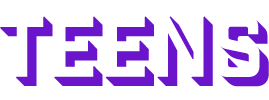Spiritual Verification and Validation
Written by Tom Moffitt
Passover is fast approaching, and it’s self-evaluation time for God’s people. Consider that our mind is like a computer. We are to reprogram our minds from the physical to the spiritual. What spiritual lessons can we learn from computer programming techniques?

All critical software goes through a verification and validation process where it is tested to ensure it produces the correct results. Sample input data is entered so that the end results can be calculated and tested for accuracy. Every character of the new software output is compared to the expected result. If there are any discrepancies, they are repaired in the software and it is retested.
With the help of the Holy Spirit, God’s people are given spiritual knowledge through the Bible. Through prayer, Bible study and meditation, we reprogram our carnal minds to start producing spiritual results instead of carnal results.
Just as a computer programmer checks that every character in the computer output is correct, in the right place and in the right color, we must be very detail-oriented in our self-examination. We must consider every thought as Paul tells us: “Casting down arguments and every high thing that exalts itself against the knowledge of God, bringing every thought into captivity to the obedience of Christ” (2 Corinthians 10:5).
Why do we do this? Because God searches our hearts and minds and understands every desire and every thought. We must learn to control all our thoughts and strive to think only thoughts that reflect godliness. To learn more about this, read “When God Searches Our Hearts and Minds.”
What kind of spiritual output are we looking for?
In the book of Galatians, Paul wrote about the fruit of the Spirit. These characteristics are the mental output that God is looking for. Our thoughts should reflect these fruits.
But we are still human, and we still have to fight bad thoughts. Satan is continually “broadcasting” his false ideas and attitudes, and we are faced with his input from many sources—social media, the Internet, radio, television, coworkers, friends and sometimes even family.
For instance, he often uses seductive images to tempt us into various lustful thoughts. We have to fight the false and evil thoughts he tries to implant into our minds.
We start by identifying the sins we need to fight and sincerely repent of them. But even after we’ve found a sin, repented of it and started fighting it, the self-examination process must continue. When upgrading or correcting software, other problems pop up in areas that formerly seemed to work fine.
The same is true in our human mind. The fix to a problem we had may need refining to prevent other problems. Or the original problem may have been overshadowing other problems we need to work on.
A continuing process
Thankfully our God is merciful and knows what we can handle. He doesn’t show us all our sins and problems at once. He doesn’t overwhelm us with more than we can handle. This is why we continue the self-examination process throughout our lives.
Software verification and validation is not a one-time process. As software is revised to incorporate new features and protection from hackers, it is verified once again. We must continue to examine ourselves to strengthen ourselves against Satan’s latest attacks.
To learn more about overcoming sin, read “Seven Steps for Overcoming Sin.”










